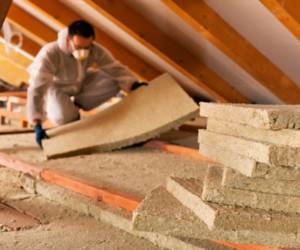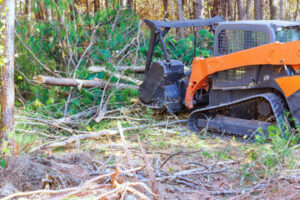Insulation Removal is a messy job that can be hazardous to your health. You’ll need a respirator mask to protect your lungs from harmful particles and safety goggles to shield your eyes.
Prior to beginning, it’s important to clear the attic space and inspect for hazards like electrical wires or structural issues. Once the workspace is clean, you can begin the process of removing old insulation. Click the https://www.perthinsulationremover.com.au/ to learn more.

1. Increase Your Home’s Energy Efficiency
Insulation is critical to regulating home temperatures, but it can lose its effectiveness over time. While adding new insulation over old can sometimes be a solution, there are significant benefits to removing the old material and replacing it entirely.
Insulation can be removed and replaced in conjunction with other renovations and upgrades, or it can be done as a standalone project. In either case, this type of work can help reduce your energy bills and improve the overall comfort of your home.
A professional can perform a thorough inspection of your home’s existing insulation and identify any areas where it may be lacking. This will help you determine whether or not replacement is necessary, and if so, how much the process will cost.
When a home is improperly insulated or has lost its original R-value, it can result in higher heating costs and reduced indoor comfort. Replacing old insulation can significantly lower your energy bills and increase the comfort of your home.
Old insulation can also be a hotbed for dust, contaminants and rodents, which can cause health hazards. Exposure to mold spores, for example, can lead to chronic coughing, sneezing and irritations of the eyes, mucous membranes, nose and throat.
In addition, it can be a breeding ground for pests that can chew through the batting and compromise your home’s structural integrity. If you notice signs of pests in your insulation, it’s important to act quickly and replace it.
A professional can ensure your new insulation is properly installed, helping you save money and enjoy a more comfortable home. In addition, a reputable company will recycle your old insulation, reducing the amount of waste sent to landfills. This helps promote a circular economy where recycled materials are reused rather than discarded. In addition, it can help you qualify for green building rebates and tax credits that can offset the cost of the installation.
2. Reduce Your Energy Bills
Insulation helps prevent energy loss, which can significantly lower your heating and cooling bills. However, old insulation can lose its effectiveness, especially if it’s damaged or contaminated by pest infestation and mold growth. Fortunately, professional insulation removal services can help you identify these problems and install new materials that will boost your home’s energy efficiency.
A reputable insulation company will use specialized equipment to vacuum or manually remove the old material and re-install it with proper placement for optimal performance. They will also ensure that the old insulation materials are disposed of safely and responsibly. These professionals will often separate recyclable materials, like fiberglass and foam, from non-recyclable materials, such as cellulose and older fiberglass products. This helps reduce waste and lower the environmental impact of these products.
You’ll be able to save money on your monthly energy bills by replacing old insulation with new, more efficient materials. This also helps reduce greenhouse gas emissions, which contribute to climate change. Moreover, new insulation can help reduce air pollution, which may be harmful to your health.
The best time to replace your attic insulation is during a renovation or remodeling project. In addition to helping you achieve better energy efficiency, it will also increase the overall value of your property. If you’re planning on selling your house in the future, new attic insulation will be a huge plus for potential buyers.
A professional insulation removal service can inspect your home and identify any damage or contamination that may need to be addressed. They can then recommend the best type of insulation to replace it with. They will be able to assess your needs and provide you with options that fit your budget and goals.
Aside from reducing your energy costs, new insulation can also improve your indoor air quality by preventing pest infestation and mold growth. It can even prevent moisture and humidity, which can lead to respiratory problems and other health issues. Additionally, new insulation will create a barrier that is less appealing to rodents and other pests, which can cause damage to your property.
3. Increase Your Home’s Resale Value
Insulation removal is a project that should be left to the professionals. Attempting to remove insulation yourself is dangerous without the proper equipment and protection. It is important to have protective gear such as eye protection goggles, a respirator mask, and coveralls when entering unfinished areas of your home such as crawl spaces or attics. These areas can be contaminated with rodent droppings and other hazardous materials. The hazard of working with old insulation is also increased if the material contains asbestos which can cause serious health problems.
In addition to protecting your home from the elements, new insulation increases your property value by improving energy efficiency, improving indoor air quality and preventing structural damage. These are all features that potential buyers look for in a home.
Old or damaged insulation will be a major deterrent and could make your home difficult to sell. Upgrading your home’s insulation can make it more appealing to buyers and help you sell your home faster and for a higher price.
A well-insulated home will save you money on your heating and cooling bills, which is a huge benefit to homeowners looking to cut costs. A properly insulated home can also reduce the stress placed on your heating and cooling system, which can extend its lifespan.
Over time, fiberglass insulation can deteriorate due to water damage and other factors. If you notice that your home’s insulation is sagging, has lost its R-value, or that it is covered in mold or mildew, it’s time to replace it. The sooner you replace your old insulation, the more money you’ll save on your energy bills and the longer your heating and cooling systems will last.
Upgrading your insulation should be a priority for any homeowner. In addition to saving on your energy bills, new insulation will improve your home’s resale value, protect your health, and keep you comfortable for years to come. If you’re ready to make the switch, contact a local insulation expert today to discuss your options. They can provide you with a free estimate for new insulation and advise you on the best type of insulation for your home.
4. Increase Your Home’s Comfort
Insulation is a vital component in any home. It helps regulate temperatures, improves indoor air quality, and saves on energy bills. However, insulation can become damaged and ineffective over time, compromising the health and comfort of your home. Insulation removal can help eliminate ineffective or compromised insulation and provide a fresh start for a better-insulated, more comfortable home.
Old insulation can be a breeding ground for mold and mildew, which can cause serious health issues in your family. When these fungi release spores into your home’s air, they can cause respiratory problems and aggravate existing allergies and asthma. This is why it’s important to have your insulation professionally removed and replaced with new, high-quality materials that will prevent mold and mildew from growing in the first place.
When your old insulation is replaced with new, it can prevent heat from being lost through the attic, allowing you to save money on your heating and cooling costs and feel more comfortable in your home. Additionally, new insulation can help reduce the “Stack Effect” in which your attic acts as a chimney and traps heat from the rest of the house. Removing and replacing old insulation can also make your whole home more consistent in temperature, preventing hot and cold spots.
Professional insulation removal services use advanced techniques to ensure safety and effectiveness. These include sealing off the work area to prevent contaminants from escaping into other parts of your home and carefully cutting and removing insulation sections, avoiding any damage to the walls or structure. A thorough plan is also created before starting the actual removal process, and workers are equipped with specialized tools and safety equipment.
When choosing a company for insulation removal, it’s important to look for an experienced and qualified team of professionals who have a track record in the field. They’ll know how to safely remove different types of insulation and will follow the appropriate guidelines for waste disposal. You can also ask for references and customer reviews to learn more about the company’s reputation and level of experience.








